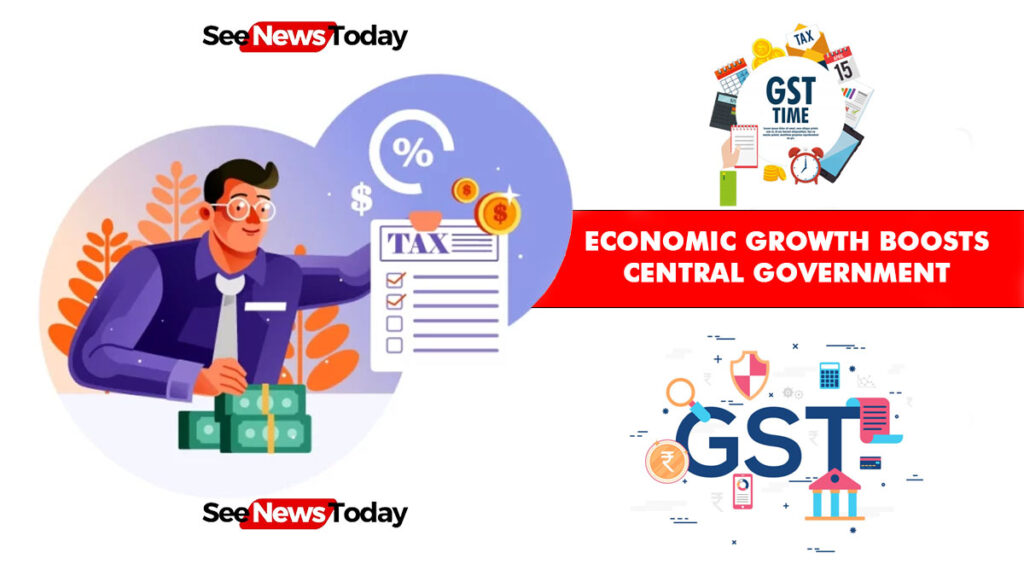“GST Surpasses Rs. 1.72 Trillion Mark: Strong Collections Signal Economic Growth Resilience, Offering Significant Pre-Budget Relief to the Government.”

Table of Contents
Positive Pre-Budget News: Third Time Crossing the Threshold
The country’s Goods and Services Tax (GST) crossed the Rs. 1.72 trillion threshold in January, marking a major milestone for the central government and providing good news one day ahead of the budget declaration. This is the third time that GST revenues have topped Rs. 1.70 trillion in the current fiscal year, indicating a significant upward trend. January’s GST revenues increased by 10.4% year over year, according to the finance ministry, making it the second-highest earning month of the fiscal year.
Noteworthy Figures: Rs.16.69 Trillion GST Collections in 10 Months
The government said that it had collected Rs. 1,72,129 crore in GST for the month of January 2024, with data being collected up to 5 p.m. on the 31st. By contrast, GST income was Rs. 1,55,922 crore in January 2023. The government has collected a total of Rs. 16.69 trillion in GST from April 2023 to January 2024.
Fiscal Year’s Highest GST Recorded in April 2023
The fact that April 2023 had the greatest GST collection in the fiscal year 2023–24 emphasises the importance of these numbers. In the month before to the budget declaration, there was a positive backdrop thanks to the collections of Rs. 39,476 crore of State Goods and Services Tax (SGST), Rs. 89,989 crore of Integrated Goods and Services Tax (IGST), and Rs. [Give the value for CGST].
Factors Contributing to Increased Collections
The economy’s growth and the influence of seasonal spending, in addition to the government’s continuous attempts to improve the GST system, are major factors in the increased GST receipts. A major contributing factor to this upward trend has also been the government’s GST structure reforms.
Significance of GST Collections
Since GST revenues are the government’s main source of revenue, they are extremely important. Numerous government initiatives and programmes are funded in part by the money collected from the Goods and Services Tax (GST). Moreover, rising GST collections demonstrate increased consumer expenditure and support an acceleration of the economy as a whole, making them a dependable indication of economic strength.
Implications for the Economy: A Closer Look at the Impact
Strengthening the Economy through GST
The steadily increasing GST receipts point to a promising future for the economy. Given that GST makes up a considerable amount of government income, the rise in collecting suggests a more stable fiscal scenario. Proactive steps by the government to improve the GST system have led to a more simplified and effective tax structure, which has boosted economic growth.
Boosting Government Programs and Schemes
The money collected in GST is a vital source of funding for a number of government programmes. These monies are necessary to carry out social programmes, build infrastructure, and carry out other critical initiatives that promote the general well-being of society. The increase in GST receipts guarantees a sound financial basis for these initiatives.
Reflection of Consumer Spending
A significant indication shown by the growth in GST revenues is the elevated degree of consumer expenditure. A greater amount of economic transactions is reflected in the GST pool as both people and corporations contribute more to it. This uptick in economic activity is a sign of rising consumer and corporate confidence, which is supporting a healthy economic cycle.
Catalyzing Economic Acceleration
The increase of GST collecting stimulates economic expansion in general. In addition to funding government programmes, the money raised by the GST has a multiplier impact on the economy as a whole. A vibrant economic ecology, the creation of jobs, and corporate development are all facilitated by increased spending and liquidity.
Government’s Strategic Measures: A Driving Force Behind GST Success
Ongoing GST System Improvements
One major factor contributing to the steady increase in revenues has been the government’s dedication to enhancing and optimising the GST system. The GST framework’s performance has been attributed to ongoing attempts to streamline tax procedures, resolve bottlenecks, and improve the framework’s overall effectiveness.
Addressing Economic Challenges
The government’s capacity to successfully address economic difficulties is also demonstrated by the improved trend of GST collecting. The government’s proactive approach to enacting changes guarantees adaptation and resilience in the face of uncertainty as economic conditions change.
Impact of Seasonal Expenditure
One of the variables leading to the higher GST revenues has been recognised as the higher costs related to the fruit season. GST revenues are impacted by seasonal changes in spending patterns; the government’s ability to take advantage of these variations demonstrates prudent financial management.
Government’s Reforms in GST
The GST structure adjustments implemented by the government have been instrumental in creating a favourable atmosphere for higher collections. The upward trajectory in GST collections may be attributed to these measures, which have restored trust among taxpayers by streamlining tax compliance, lowering administrative obstacles, and encouraging voluntary compliance.
Conclusion: A Positive Outlook for the Budget
In summary, the strong increase in GST receipts offers a favourable environment for the impending budget statement. Seasonal considerations and economic resiliency, together with the government’s strategic efforts, have driven GST revenues to unprecedented levels. The country’s overall fiscal health appears to be positively impacted by the consistent rise in GST receipts, which are a critical source of government income and economic acceleration. This momentum may be maintained and the good economic trajectory advanced with the incoming budget.




